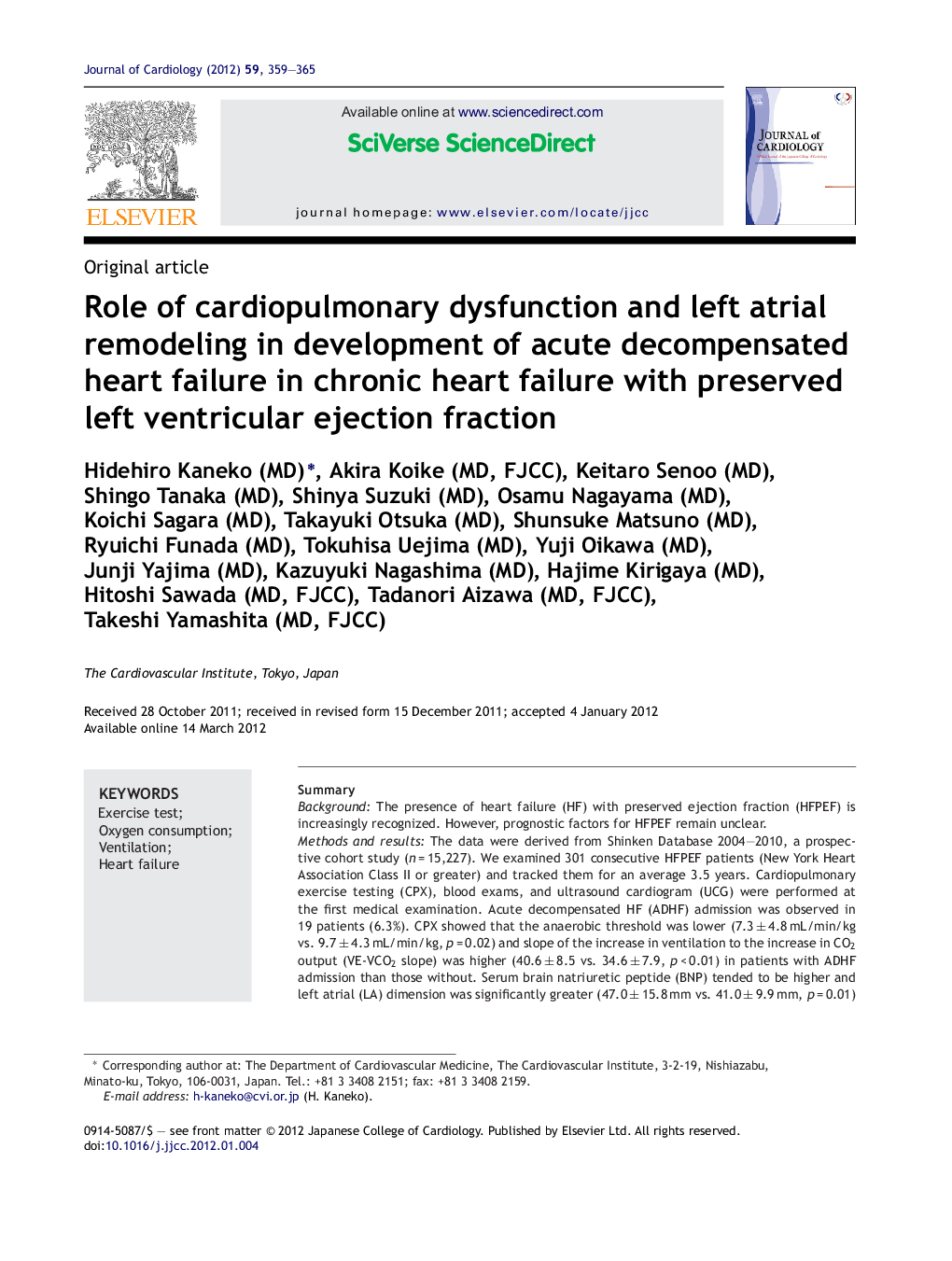| Article ID | Journal | Published Year | Pages | File Type |
|---|---|---|---|---|
| 2963525 | Journal of Cardiology | 2012 | 7 Pages |
SummaryBackgroundThe presence of heart failure (HF) with preserved ejection fraction (HFPEF) is increasingly recognized. However, prognostic factors for HFPEF remain unclear.Methods and resultsThe data were derived from Shinken Database 2004–2010, a prospective cohort study (n = 15,227). We examined 301 consecutive HFPEF patients (New York Heart Association Class II or greater) and tracked them for an average 3.5 years. Cardiopulmonary exercise testing (CPX), blood exams, and ultrasound cardiogram (UCG) were performed at the first medical examination. Acute decompensated HF (ADHF) admission was observed in 19 patients (6.3%). CPX showed that the anaerobic threshold was lower (7.3 ± 4.8 mL/min/kg vs. 9.7 ± 4.3 mL/min/kg, p = 0.02) and slope of the increase in ventilation to the increase in CO2 output (VE-VCO2 slope) was higher (40.6 ± 8.5 vs. 34.6 ± 7.9, p < 0.01) in patients with ADHF admission than those without. Serum brain natriuretic peptide (BNP) tended to be higher and left atrial (LA) dimension was significantly greater (47.0 ± 15.8 mm vs. 41.0 ± 9.9 mm, p = 0.01) in patients with ADHF admission than those without. Multivariate analysis showed that higher VE-VCO2 slope and greater LA dimension were independent determinants of ADHF admission.ConclusionAn aggravated CPX parameter and LA dilatation were associated with ADHF admission in patients with symptomatic HFPEF, suggesting the prognostic role of cardiopulmonary dysfunction during exercise and LA remodeling in the pathogenesis of decompensated HF development in HFPEF.
